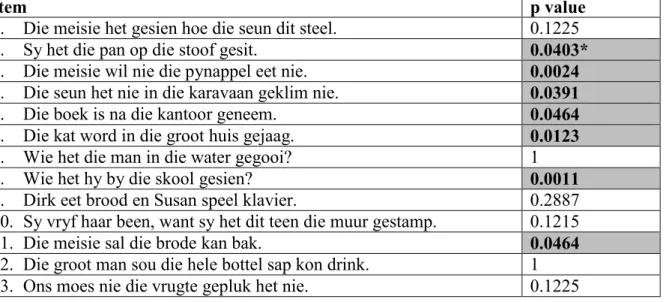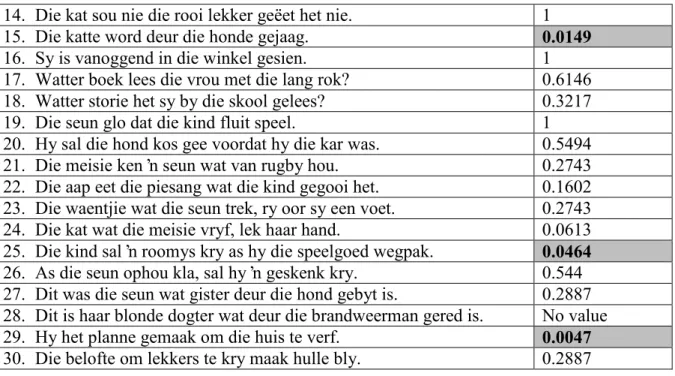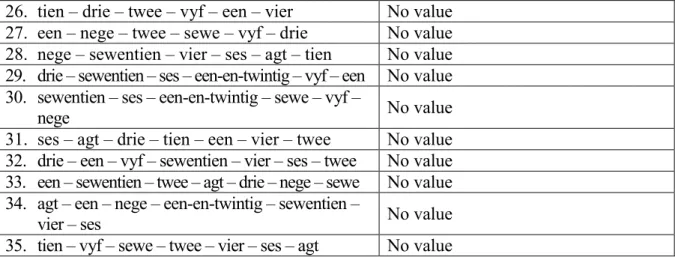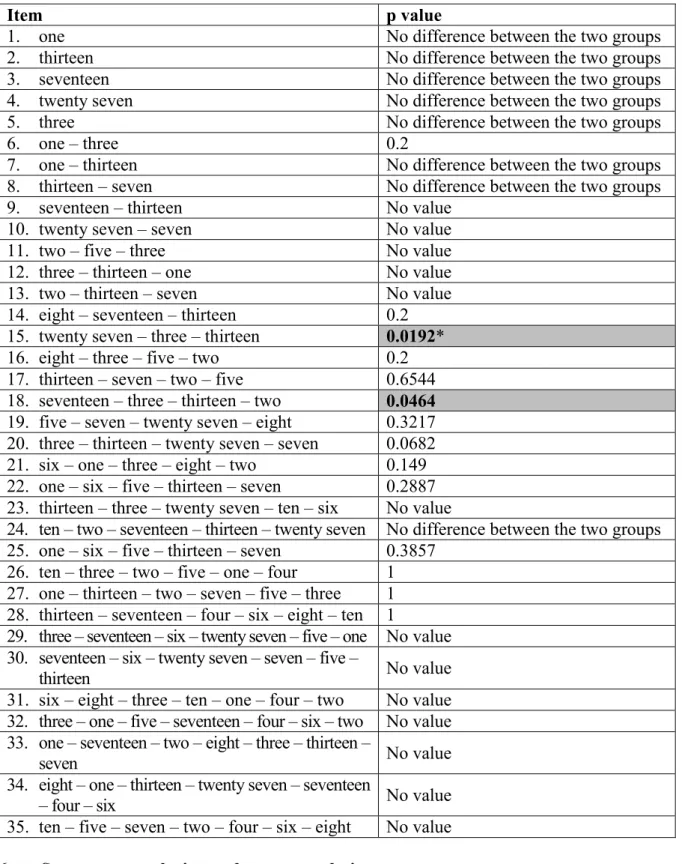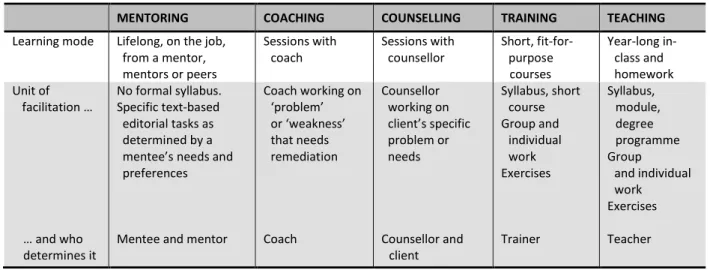Contemporary international definitions of "plain language" are of three types: numerical (or formula-based), element-focused, or outcome-focused (Cheek 2010). From a text-linguistic perspective, this article ponders the nature of the definition of "plain language".
Definitions focusing on writing guidelines
Formulas do not indicate what makes a document difficult to read, and therefore do not provide guidance on how the document can be improved. However, guidelines are not a substitute for the writer's good judgment or the writer's understanding of the writing process.
Definitions focusing on the outcome of the reading process
The judgment of the ordinary language practitioner should determine the best course of action when such a tension arises. However, before the definition is categorized and analyzed from a text linguistics perspective, a brief description of the development of 'plain language' in South Africa is given.
The relatively short history of ‘plain language’ in South Africa
Communication is in plain language when it meets the needs of the audience – using language, structure and design so clearly and effectively that the audience has the best possible chance of easily finding, understanding and using what they need. In section 7, the local definition of 'free language' as contained in the NCA and CPA is categorized according to these three types of definitions.
Defining plain language in contemporary South Africa
Categorising the local definition
The local definition from a textlinguistic perspective
- Cohesion
- Coherence
- Intentionality and acceptability
- Informativity
- Contextuality
- Intertextuality
Coherence, according to Renkema, refers to "the connection that is created by something outside the text". Intertextuality refers to "the ways in which the production and reception of a particular text depends on the participants' knowledge of other texts" (De Beaugrande and Dressler 1981: 182).
Problems with the ‘plain language’ definition
- Language realities in South Africa
- Determining average literacy
- The gap between theory and practice: Language policy
- Lack of norms and standards for assessment
The third problem relates to the interest and willingness of the language profession to comply with the provisions of plain language legislation. The same authors suggest that when assessing a document in terms of 'plain language', answers to the following questions are sought: i).
Concluding remarks
In contemporary South Africa, where the implementation of the provision in the CPA is still a fairly recent event, there is little guidance on the issue of evaluation and assessment. Common English Editing and Writing Skills Training: Helps you clarify your web and print communications.
Towards impact measurement: An overview of approaches for assessing the impact of academic literacy abilities
Introduction
Toward Impact Measurement: A Review of Approaches to Assessing the Impact of Academic Literacy Abilities. It should be kept in mind that there are several challenges in assessing the impact of academic literacy interventions.
Previous studies on the impact of academic literacy interventions
Mhlongo (2014) evaluated the impact of an academic literacy intervention at North-West University's Vaal Triangle campus. It used the same test of academic literacy that was used in Van Dyk et al.
Discussion and conclusion
However, this study found that students' grades in academic literacy modules were good predictors of academic success. The impact of an academic literacy intervention on first-year students' academic literacy levels: The NWU (Vaal Triangle Campus) experience.
The use of digit and sentence repetition in the identification of language impairment: The case of child speakers of Afrikaans and
Literature review: Digit repetition and sentence repetition
- Sentence repetition
- Digit repetition
Archibald and Joanisse (2009) found that sentence repetition has a high sensitivity to language disorder, as did Conti-Ramsden et al. Sentence repetition has also been shown to provide an accurate indicator of LI in adults (Poll et al.
Research questions
Both sentence and digit repetition tasks have been conducted in languages other than English (see e.g. In this study, the aim was to use sentence and digit repetition with Afrikaans and SAE-speaking 5-year-olds to determine whether these repetition tasks are sensitive to LI in these under-researched languages.
Methodology and study design 1 Purpose of the study
- General procedure
- Participants
- Data collection instrument
- Data transcription
- Scoring methods
- Statistical analyses
A study by Acheson and MacDonald found that the phonological properties of a sentence (ie, the sound representation of each word in a sentence) influence a child's ability to remember a sentence. It has also been found that sentences containing phonological overlap (e.g. The baker sought a banker bought a house and She sells seashells on the seashore example above) were repeated less accurately than sentences without such overlap (Acheson and MacDonald 2011 : 202).
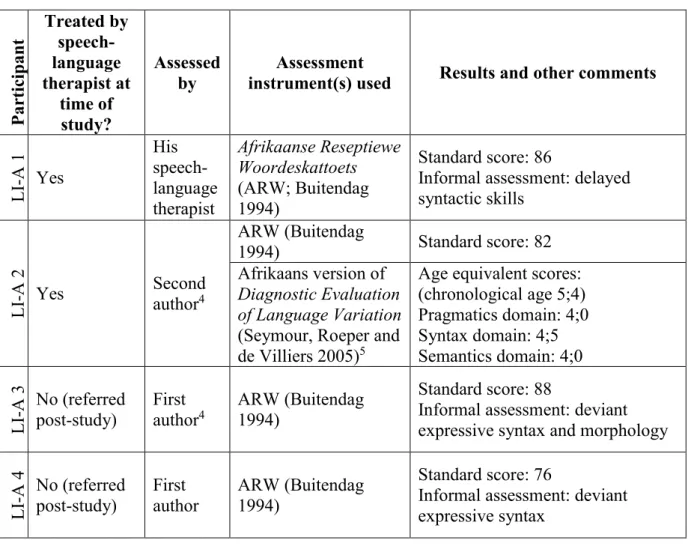
Results and discussion
- Sentence repetition
- Digit repetition
- Answers to the research questions
Die seun glo byvoorbeeld dat die kind fluit speel ('Die seun glo dat die kind fluit speel') is herhaal as Die kind wat by die skool fluitspel ('Die kind wat fluit speel'). iii) lang aksie- en nie-aksie-passiewe konstruksies. Byvoorbeeld, daardie kat sou nie die rooi lekkergoed geëet het nie ("Die kat sou nie die rooi sweet geëet het nie") is herhaal omdat daardie kat nie die rooi lekkergoed sou geëet het nie ("Die kat het nie die rooi sweet geëet nie").

Summary, conclusion and recommendations
Uses and interpretations of non-word repetition tasks in children with and without specific language impairment (SLI). Morphological productivity in children with normal language and SLI: A study of the English past tense.
Overview of models of interpreting
Court interpreting is a method of communication in its own right and takes into account issues involving two languages, takes into account aspects of culture and considers the presence of the interpreter as an influence on the nature of communication between the parties involved in the interpreting process are. . Pöchhacker's statement is relevant to this study because the definitions and descriptions of the processes in which court interpreters are involved during interpreting become a representation of what they actually do when interpreting, which ultimately underlies an interpreting model.
The relevance of models for court interpreting
- The helper model
- The conduit model
- The communication facilitator model
- The bilingual-bicultural model
- The language facilitator model
- The channel or bridge model
Unlike the helper, channel and communication facilitator models, the bilingual-bicultural model takes the role of the court interpreter further. She suggests that the role of the court interpreter be redefined rather than being seen as the bilingual-bicultural mediator.
Workshops for training court interpreters 1 The profile of the workshop participants
- The design of the workshops
- Facilitation approach
These models served as guidelines for all court interpreters who were expected to perform according to how their role was conceptualized and defined. These court interpreters had served in the DoJCD for varying periods, ranging from one year to more than 20 years.
Participants’ responses
- Sepedi-speaking participants
- Southern Sotho-speaking participants
- IsiNdebele-speaking participants
- Xitsonga-speaking participants
- Setswana-speaking participants
- IsiZulu-speaking participants
- IsiXhosa-speaking participants
- Tshivenda-speaking participants
Another definition of interpreters given by this group was muhlamuseri wa timhaka (‘one who interprets messages’ – this English definition was given by the group itself). The participants from the Tshivenda-speaking group defined interpreters as ndi u amba zwo ambiwa nga muambi wa zwi pfukisela kha tshikhuwa u songo engedza kha honoyo mulaedza ('it is pronouncing what the speaker has said and conveying it in English without adding anything '). was said in the message' (this English version was provided by the group itself).
Findings
IsiXhosa-speaking participants defined interpreters as isithethantonye/ntetha solwimi ukucacisela omnye umntu (‘one who conveys or repeats something to another in a language one understands’ – this English version was provided by the group itself). This latter definition is similar to that of the IsiNdebele, Setswana and IsiXhosa speaking participants.
Discussion of the findings
From the participants' answers, some important and unique aspects emerged, indicating completely different approaches to the process of interpreting by South African court interpreters. I refer here to the South African context because the participants were asked to define and describe the phenomenon of interpreting in their South African languages.
Recommendations
The teaching approach used increased their awareness of the process involved in interpreting and this awareness can guide them in what to do when asked to interpret. It also confirms that court interpreters are the ones who can best explain what they actually do when they translate, since they are the ones who carry out the process.
Conclusion
The premise of the training - the cognitive process approach - appears to be one of the best teaching methods for training practicing court interpreters. It would be very beneficial to include learning about different models of interpreting as part of the training of court interpreters.
Mentoring for text editors: Fit for purpose in the era of freelancing, more so than alternative development strategies
Background
The professional associations for copywriters in the English-speaking world are helping to fill this gap by offering voluntary mentoring programs (voluntary in the sense that copywriters are not required to sit through them, and the volunteer mentors are simply paid for their participation ). In the 21st century, self-efficacy has become extra important for copywriters for two reasons.
Mentoring: How it differs from coaching, counselling, training and teaching
- The role players
- Who poses the questions and who provides the answers
- Power or status
- Function of facilitator of learning
- Function of learner
- Learning mode
- What sets mentoring apart
- Mentoring as online learning
- The unit of facilitation and who determines it
- The means of assessment
- The extent to which self-efficacy as an outcome of mentoring is considered
As mentioned earlier, much of the tutoring for copy editors these days takes the form of online, distance learning, or e-learning. Based on the available evidence, formal assessment is absent from professional association mentoring programs for copy editors.
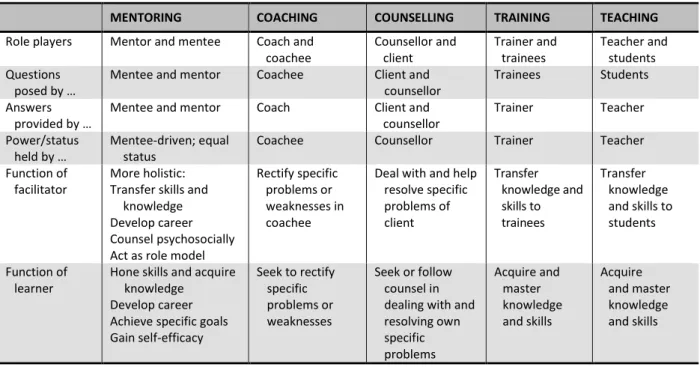
Concluding observations
Available online: http://www.personneltoday.com/hr/benefits-of-mentoring-programmes-in- occupational-health/ (Accessed 11 December 2013). Available online: http://www.lynnleadership.com/downloads/MENTORING - Formal or Informal Mentoring - Does it Make a Difference.pdf (Accessed 13 October 2014).
Reading to Learn: A literature review within a South African context
Literacy, academic reading and writing pedagogies, and Reading to Learn
Teachers must then integrate the teaching of reading and writing skills across all subject disciplines (Rose and Acevedo 2006). Second, unlike current trends in education in South Africa, which see classroom activities as predetermined by students' abilities, all students in the same class are taught the same level of reading and writing skills to ensure that the skills gap typically found in classrooms and maintained. from differentiated learning is not preserved or worsened.
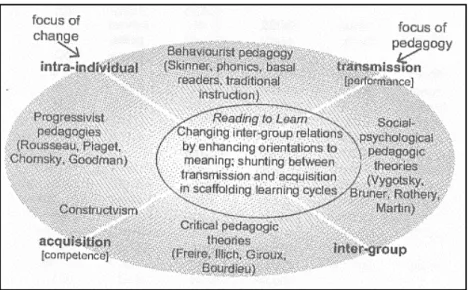
The conceptual framework of Reading to Learn 1 Halliday – Language as a text within a social context
- Vygotsky – Learning as a social process
- Bernstein – Education as a pedagogic device
Because of the complexity of accessing texts, as illustrated above, it is argued that teaching literacy needs to be "simplified" (complex patterns need to be broken down) to help students access all three levels of a language ( Rose 2005). , while students are insured at the same time. By breaking down a text, for example, the task becomes less stressful, and students can make sense of the text in question.
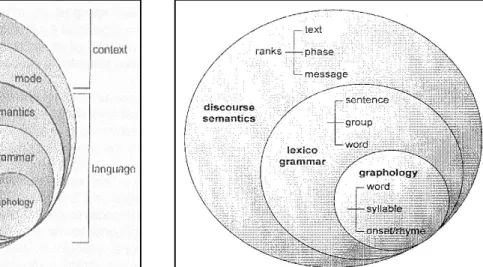
Conclusion
In doing so, this essay will draw links between historical events of the Group Areas Act of 1966 and events in the novel. In conclusion, this essay has argued that the novel "Buckingham Palace" is considered relevant and should remain part of the Grade 11 curriculum.
Measuring receptive collocational competence across proficiency levels
Related literature
- Definition of collocations
- Measurability of collocations
While attributing importance to the integrity of co-occurring words in terms of storage and retrieval, Sinclair's definition of collocation, which is "the occurrence of two or more words within a short space of one another in a text," introduces the notion of. The operational definition adopted in this study is that given in the Oxford Collocations Dictionary for Students of English, which defines collocations as "the way in which words are combined in language to produce natural-sounding speech and writing" (Lea, Crowther and Dignen 2002: vii).
The present study
- Sample population
- The test battery
- Proficiency measure: TOEFL
- Collocation test
Their collocates (verbs in the V+N combination) were selected from the Oxford Collocations Dictionary for Students of English (Lea et al. 2002). The result is collocation in the form of a verb combined with a noun (Lea et al. 2002).
Results
- Item analysis
- Relationship between collocation knowledge and EFL proficiency
- Collocational growth across proficiency levels
- Collocational growth across word frequency bands
She joined the Navy where she expects to …… the rank of captain before she retires. a) reach b) hit c) hit. Jumbojets somehow ……… the glamor of the transatlantic liner, which influences the number of passengers. a) requires b) lacks c) lacks.
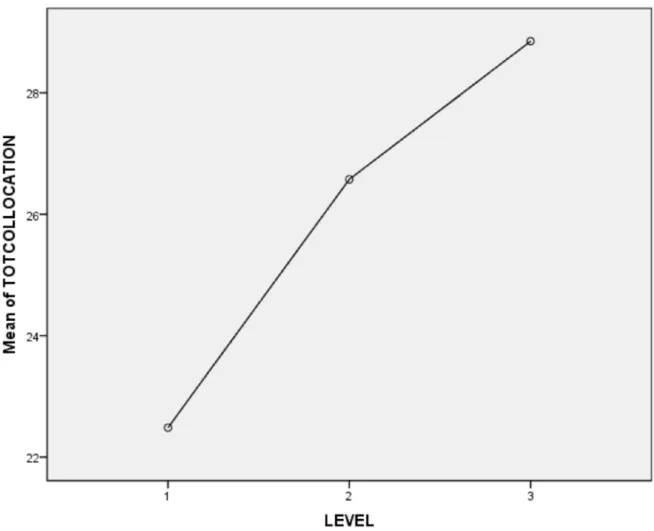
Academic literacy of South African higher education level students
Does vocabulary size matter?
Dimensional approach to vocabulary knowledge
"Vocabulary size" refers to how many words we know, regardless of how well we know them (cf. The "receptive-productive" distinction is based on the assumption that understanding a word does not necessarily mean using it correctly (Gairns and Redman 1986, Laufer and Paribakht 1998, Van de Poel and Swanepoel 2003, Zareva, Schwanenflugel and Nikolova 2005), and some scholars regard it as a bridge between lexical competence and performance (cf. Melka 1997).
Vocabulary size: Threshold and text coverage
They also agreed with Nation (2006) and Schmitt (2008) that medium-frequency vocabulary is necessary for professional language use, while acknowledging that words from this vocabulary represent a pedagogical challenge that needs to be addressed. Given the general observation that even advanced L2 and FL speakers of English typically achieve a vocabulary size of less than 5000 word families (Waring and Nation 1997), this study tests participants' minimum vocabulary size up to the 5000-word band.
Academic literacy
Next, we can broadly define academic literacy as "the knowledge and skills needed to communicate and function effectively and efficiently in diverse academic communities and to achieve well-defined academic goals" (Van Dyk and Van de Poel 2013: 47). Implicit in this attempt at a definition is the notion that academic literacy has three different dimensions: a social (information exchange), cognitive (understanding, organizing and reasoning about information) and a linguistic (linguistic) dimension.
Methodology 1 Instruments
- Test of Academic Literacy Levels
- The Vocabulary Levels Test
- Participants
- Item description
- Vocabulary size of first-year students
- The relationship between academic literacy and vocabulary size
Correlation between academic literacy (measured by the TALL) and vocabulary size 4.4 The relationship between academic literacy and vocabulary size in word groups To gain more insight into the relationship between vocabulary size and academic literacy (related to the second research question), The relationship between the size of vocabulary and academic literacy was further explored by mapping each frequency word band score to TALL levels. This was accomplished by performing a one-way ANOVA on each of the frequency word bands.
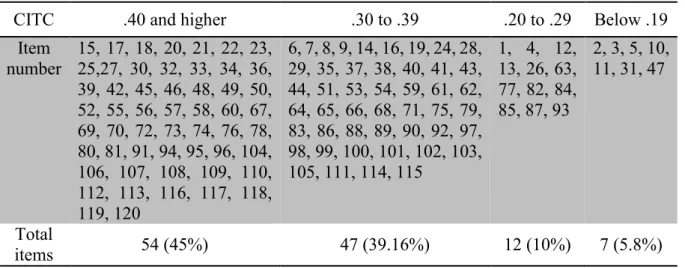
Discussion
The predictive relationship between vocabulary size and academic literacy also appears to be stronger for rare word ties. For bands that are more problematic for many students, such as the 5,000 word band, students should be encouraged to read more and expand their vocabulary size and possibly aim for optimal comprehension (which is 8,000 word families).
Conclusion
It should also be noted that all risk groups as identified by the TALL do not appear to differ significantly in terms of their vocabulary size. Vocabulary test: questions for test development with six examples of tests of vocabulary size and depth.
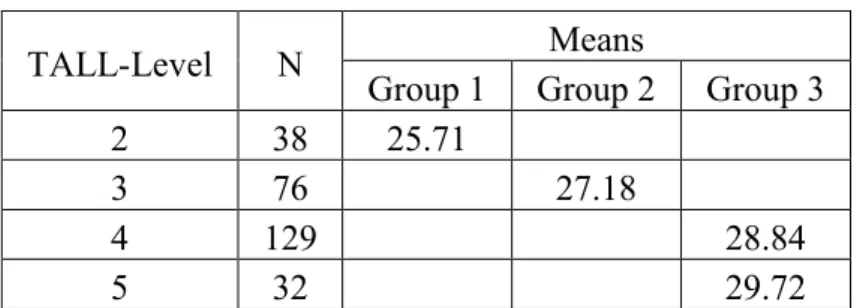
They do not know much, but then, you have to cover the syllabus”
- The study
- The basis for teachers’ language choices
- Language of textbooks and examinations
- School Y (Social Studies lesson)
- School Z (Science lesson)
- The language proficiency of individual teachers
- Pressure to cover the syllabus
- School W (Mathematics lesson)
- School W (Social Studies lesson)
- New imperatives for education, training and learning
Here, code-switching between different languages represents the teachers' awareness that the students are not proficient in the language of assessment. Teacher W2 is acutely aware that her students do not master the language of textbooks and exams.
Introduction: Context and problem
South Africa is a multilingual country with 11 official languages, all of which have equal status, rights and privileges as set out in the Constitution of the Republic of South Africa (Government of South Africa 1997). The challenges in the healthcare sector also include not only the number of languages and cultures involved, but also "the different views on the nature of a medical encounter" (Van de Poel and Fourie come to the fore in, for example, the relationship between the healthcare staff and the patient, the interpretation of the status and power of the interactants and the interpretation of disease sources and character.
Theoretical framework
- English language learning and training for specific purposes
- Language for specific purposes
- Towards designing a syllabus for specific needs
- Towards materials development for healthcare professionals
The purpose of this article is to report on the initial steps taken in the course design and materials development process which involved the identification of an appropriate theoretical framework as well as an in-depth needs analysis. These skills often help or allow multilingual professionals – often people who lack proficiency in the language(s) of their professional environment – to integrate into the workforce, to establish social relationships, and to be more open to lifelong learning.
Research design
- Needs analysis
- Empirical investigation
- Instruments and procedure
- Participants

